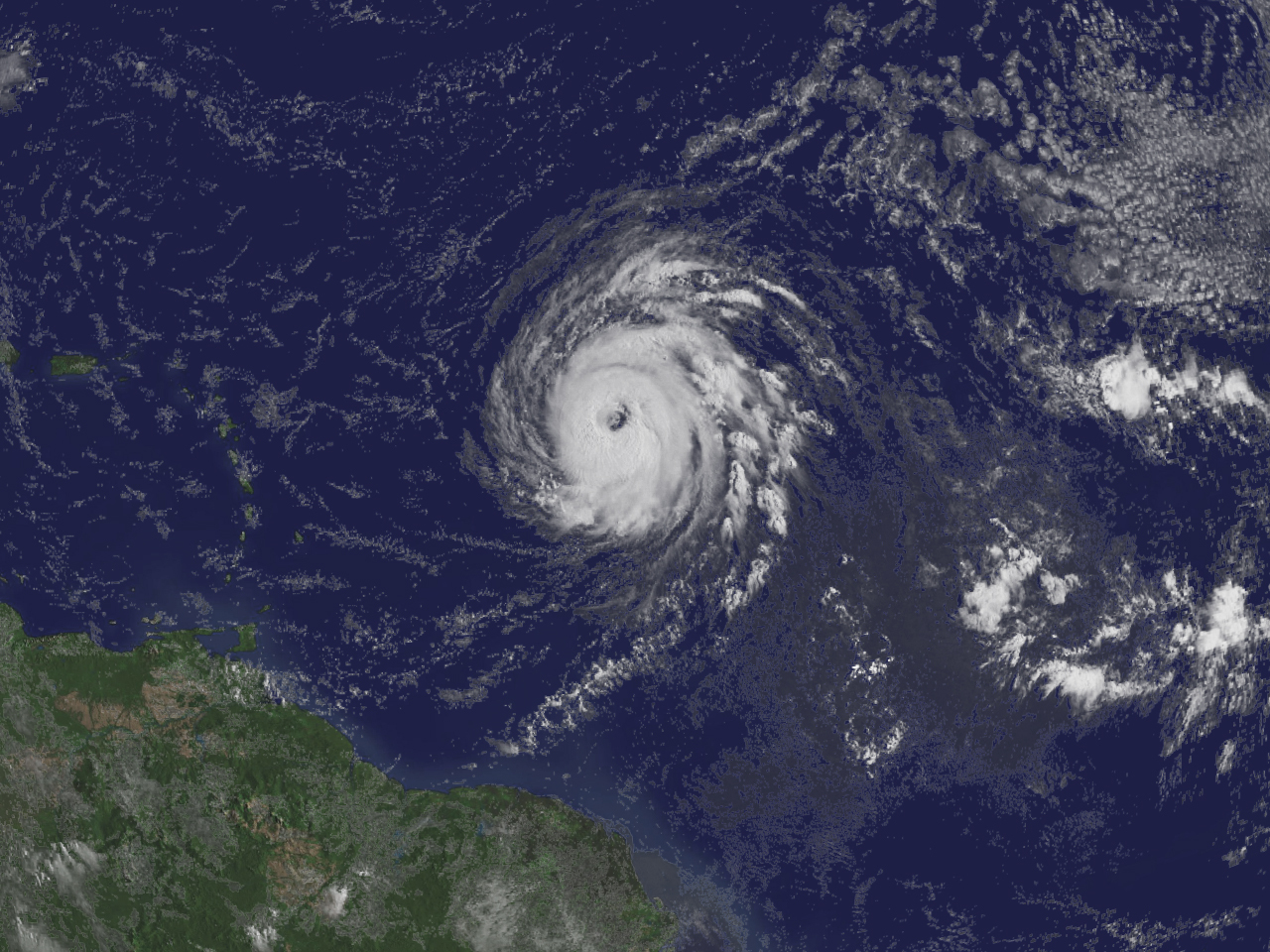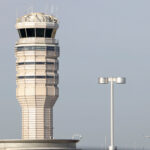The coldest air in almost 20 years is sweeping over the central U.S. toward the East Coast, threatening to topple temperature records, ignite energy demand and damage Great Plains winter wheat.
Chicago’s high today won’t reach zero Fahrenheit (minus 18 Celsius) and may just hit that tomorrow, according to the National Weather Service. New York City’s low will fall to 8, Washington will see 7 and Dallas’s low will be 18. Orlando, Florida, may drop to freezing at 32 degrees. For the East, tomorrow will be even worse.
Winter storms and frigid air add volatility to commodities trading and spot power markets. Natural gas futures in New York have surged 24 percent since Nov. 1 as the coldest start to the U.S. heating season in 13 years boosted fuel demand. Last week, as snow and cold gripped the nation, spot power for New York City jumped more than 11-fold in one hour, while wheat climbed the most since mid-October. This week, cities from Minneapolis to Pittsburgh may have record-low highs.
“Cold temperatures and gusty winds associated with an arctic airmass will continue dangerously cold wind chills as far south as Brownsville, Texas and central Florida,” the National Weather Service said today on its website. “This arctic airmass will affect the eastern two-thirds of the country on Monday as a sharp cold front moves towards the East Coast.”
Polar Pig
Hard-freeze warnings and watches, which are alerts for farmers, stretch from Texas to central Florida. Mike Musher, a meteorologist with the U.S. Weather Prediction Center in College Park, Maryland, said 90 percent of the contiguous U.S. will be at or below the freezing mark today.
“It definitely looks like one heck of a ‘polar pig’ shot,” Kyle Cooper, director of research with IAF Advisors in Houston, said in a Jan. 3 telephone interview, using a term for a bulge of cold air out of Canada. “Models show it as quite intense and dropping down pretty far south.”
Freezing temperatures spur energy demand as people turn up thermostats to heat homes and businesses. Power generation accounts for 32 percent of U.S. natural-gas use, according to the Energy Information Administration. About 49 percent of all homes use the fuel for heating.
Consumer Costs
“Everybody’s energy bills will be going up,” Musher said. “I am sure there are going to be multiple records broken across a large part of the country.”
Along with the cold, snow, rain and ice will persist in many high-population areas. As of 4:22 a.m. in New York, 2,474 flights had been canceled across the U.S., according to FlightAware, a Houston-based tracking service. Freezing temperatures in New York may have contributed to a Delta Connection flight sliding into a snowbank at John F. Kennedy International Airport, shutting flight operations for two hours.
Across the U.S., the natural gas-weighted heating degree days value for tomorrow is expected to be 47.65, above the 10- year normal of 29.9 and the 30-year mark of 31, said Bob Haas, manager of energy weather at MDA Weather Services in Gaithersburg, Maryland.
The last time such a high value was reached was in 1996, when it was 50.06, Haas said. Heating degree values are calculated by subtracting the daily average temperature from a base of 65 degrees.
“As far as power and energy demand, we will see those really skyrocketing Sunday, Monday and Tuesday,” Haas said Jan. 3. “This will be some of the coldest air in decades.”
Roger said there’s a chance the value for the day would exceed 50.
Temperature Records
Chicago, Minneapolis and Pittsburgh may set records, Haas said. The lowest high in Chicago was minus 11 reached for the last time in 1994, while Pittsburgh’s record is minus 3 in 1994 and Minneapolis was minus 20 in 1888, according to Haas.
The daytime high in Chicago is expected to be minus 10 and the wind chill will be in the minus 35- to minus 50-range, said Richard Castro, a weather service meteorologist in Romeoville, Illinois.
“It’s really dangerous stuff,” he said.
While temperatures crashed in much of the central and eastern U.S. at the end of last week, dropping to a high of 14 in Chicago and 18 in Manhattan, this week’s cold will have a greater impact because most people are back to work after the Christmas and New Year’s holidays, said Michael Schlacter of Weather 2000 Inc. in New York.
Readings may be even colder than predicted because forecast models have trouble with extremes, he said. Areas in the East that didn’t lose their snowcover over the weekend may also have lower readings, Schlacter said.
Power Forecasts
In addition, wind chill is a cold factor that can’t be measured when looking at temperature alone, Rogers said. Wind chill alerts stretch from Montana to Maine and as far south as Texas and Florida.
PJM Interconnection LLC expects power consumption on the largest U.S. grid to jump this week to the highest level in almost four months. Demand on the 13-state grid, which serves more than 60 million people from Washington to Chicago, will peak at 134,473 megawatts tomorrow, the most since Sept. 11, according to a Jan. 3 posting on PJM’s website and to grid data compiled by Bloomberg.
Electricity use in New York City will peak tomorrow at 7,682 megawatts, the most since Oct. 7, New York Independent System Operator Inc. said Jan. 3. Spot natural gas for New York City surged last week to the highest level in almost a year.
Futures Prices
Teri Viswanath, director of commodities strategy at BNP Paribas SA in New York, said the cold wave has been priced into natural gas futures.
“As traders and investors return on Monday, our expectation is that prices will likely stay supported,” she said in an e-mail interview Jan. 3. “As far as power and energy demand, we will see those really skyrocketing.”
Natural gas for February delivery climbed as much as 1.6 percent to $4.375 in electronic trading on the New York Mercantile Exchange, and was at $4.371 at 4:26 a.m.
The frigid temperatures also pose a threat to winter wheat crops in areas that aren’t covered by a layer of snow to insulate the plants, said Paul Markert, a meteorologist with MDA Weather Services.
“There could be some widespread winter-kill damage in northern Kansas and Nebraska Monday, Tuesday and Wednesday,” Markert said.
Wheat Gains
Wheat for delivery in March advanced as much as 0.8 percent to $6.105 a bushel on the Chicago Board of Trade today.
As the cold slices across the Great Plains, the East will see temperatures today swing as high as 48 in New York and 51 in Boston.
Power demand and prices should stabilize or be somewhat lower on Jan. 6 in the Northeast because of the warmer temperatures, said Jesse Fitzmaurice, a Boston-based analyst for energy data provider Genscape Inc. That will change the next day.
“We expect high natural gas prices due to limited pipeline capacity in New England to cause high electricity prices relative to the last few winters,” Fitzmaurice said.
(With assistance from Harry R. Weber in Houston and Jeff Wilson in Chicago. Editors: Lars Paulsson, Andrew Reierson)
Was this article valuable?
Here are more articles you may enjoy.

 An Unusually Active Hurricane Season Is in Store for the Atlantic
An Unusually Active Hurricane Season Is in Store for the Atlantic  Oracle Warns Health Customers of Patient Data Breach
Oracle Warns Health Customers of Patient Data Breach  Scammers Are Pushing Auto Loan Fraud to Record Levels
Scammers Are Pushing Auto Loan Fraud to Record Levels  FAA Must Do Better After Midair Collision, Acting Chief Says
FAA Must Do Better After Midair Collision, Acting Chief Says 